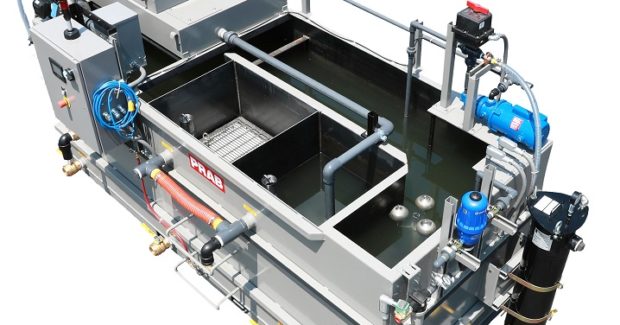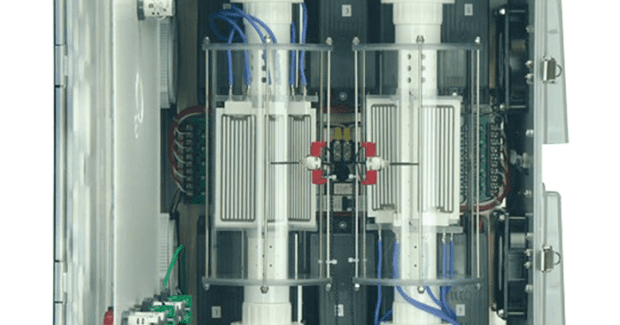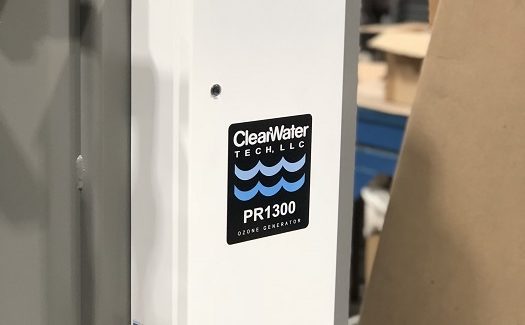Four Important Elements of an Effective Coolant Recycling System
A complete coolant recycling system can improve profits, tool life, workplace safety and regulatory compliance. Maximizing its effectiveness starts with the most important and essential piece of equipment, followed by three options for coolant management and monitoring.
Posted: February 27, 2019
The cost of using of metalworking coolants in machining to flush chips away while providing lubricity and heat removal for high-speed tools continues to rise. Some shops spend upwards of $100,000 each year on the concentrate alone. Add to this high maintenance labor, haul away costs and possible penalties associated with improper disposal of spent coolant after it has exceeded its useful life, and the importance of recycling as much coolant as possible becomes obvious. Simply reusing old coolant without filtration or any sort of treatment is not an acceptable method for reducing costs. Once the coolant has been used, its quality and the proportion of concentrate to water is compromised, which can lead to several significant issues, including:
- Decreased effectiveness in controlling heat and lubricity.
- An increase in bacteria and residual tramp oil deposits.
- Increased operational costs due to unnecessary tool degradation and premature tool failure.
- Costly fines or even a complete production shutdown due to non-compliance with local, state and federal regulations for coolant disposal.
- Rancid odor from bacteria within the contaminated fluid, plus the cost of expensive biocides – which can be detrimental to employee health – to control the odor.
- Dermatitis and other health hazards resulting from employee exposure to rancid coolant, which can damage employee morale and overall productivity due to unsafe working conditions.
Implementing a complete coolant recycling system is a key to improving profits, tool life, workplace safety and regulatory compliance. Such a system should include four elements to truly maximize the effectiveness of any coolant recycling initiative, starting with the most important and essential piece of equipment, followed by three additional options for coolant management and monitoring:
1. CENTRALIZED COOLANT RECYCLING SYSTEM
Modernized coolant recycling systems require minimal maintenance, experience minimal downtime and reduce employee contact with rancid coolants. By recycling these fluids, organizations can more easily achieve and adhere to ISO 14001 environmental compliance by identifying waste coolant streams and managing, monitoring and controlling their environmental challenges. A centralized recycling system can remove tramp oils and suspended solids from contaminated coolant, control bacteria, and adjust fluid concentrations for optimal recovery and performance. These systems use three separate principles to recondition metalworking coolants commonly used in individual machine tools: gravity settling, filtration, and coalescence. They are equally effective for washing compounds and other water-soluble mixtures where tramp oils and suspended solids detract from performance. From a bottom line standpoint, the positive contributions these systems can make to your operation are numerous and impressive, because they can:
- Improve tool life up to 209 percent.
- Reduce new fluid purchases up to 75 percent.
- Reduce waste disposal costs up to 90 percent.
- Deliver 100 percent ROI in six to nine months.
2. OZONE TREATMENT SYSTEM
The most common cause of coolant failure is rancidity. Coolant contained certain biocides that were considered carcinogens until 1970, when those chemicals were outlawed from both sale and dumping down the drain. Without the harmful biocides, coolant can lose its resistance to bacteria growth. In the right conditions and in a short amount of time, sumps can go from having only a few hundred microbes per milliliter to over one million. There are a few ways to try to lower or eliminate the bacteria count within metalworking coolant, including chemical treatment with biocides and/or ozone. Modern coolant management systems generate and inject ozone directly into the coolant after it is free of tramp oil and dirty particulate. With the bacterium breeding ground eliminated, an ozone generator breaks down the organic matter by penetrating each bacteria cell’s membrane and interfering with the cell’s metabolism. This effectively kills the bacteria while keeping the coolant healthy and extending its life. Ozone generators also eliminate odors, clogged coolant lines and slime in sumps while minimizing employee health issues.
3. COOLANT CONCENTRATION CONTROL
An in-line process refractometer is an economical way to monitor and control the concentration of coolant in a coolant recycling system. Clean coolant from the system’s clean tank is continuously circulated through the automatic refractometer to monitor the coolant concentration ratio. When the concentration level drops below the required ratio (usually ±1 percent) the system will add more chemical and less water to bring the concentration level back up to where it needs to be. When the concentration level rises above the required ratio, the system will add less chemical and more water to bring the level down to the desired ratio. The system will dose the coolant for a predetermined amount of time and mix for 15 minutes before the refractometer begins monitoring the coolant concentration ratio again. This prevents under- or over-dosing the system.
4. MOBILE SUMP CLEANER
Ideal for the removal and filtration of grinding swarf, dry sludge, metal chips and other particulates, this equipment has been proven effective in extending the life of valuable metalworking fluids and coolants. Mobile sump cleaners are designed for simple, low-maintenance operation to effectively and efficiently remove solid contaminants from multiple machine tool sumps and other tanks and pits located throughout a facility. This is a vast improvement over the manual labor that is otherwise required to do this dirty job, which includes removing sheet metal pieces from the sump, disconnecting hoses and electrical connections, hauling away numerous heavy buckets filled with filtered cutting fluids, and dumping those fluids back in the sump. This process can take two to eight hours, which limits productivity. Modern units are constructed of carbon steel and other high grade materials, making them well-suited for severe industrial applications. This equipment provides an easy way to stay on schedule with a machine fluid maintenance program, all at a cost most shop owners will appreciate.



















